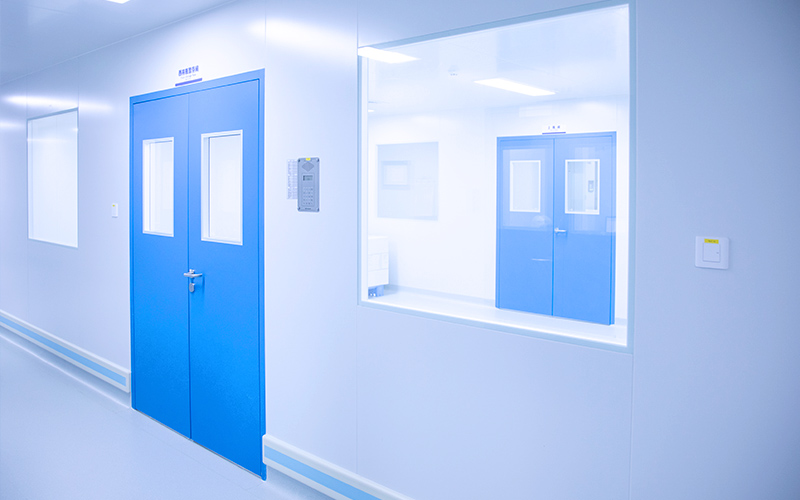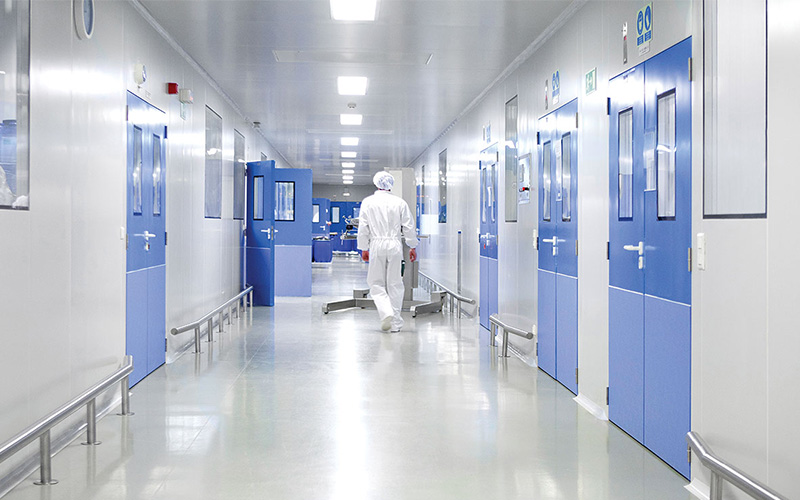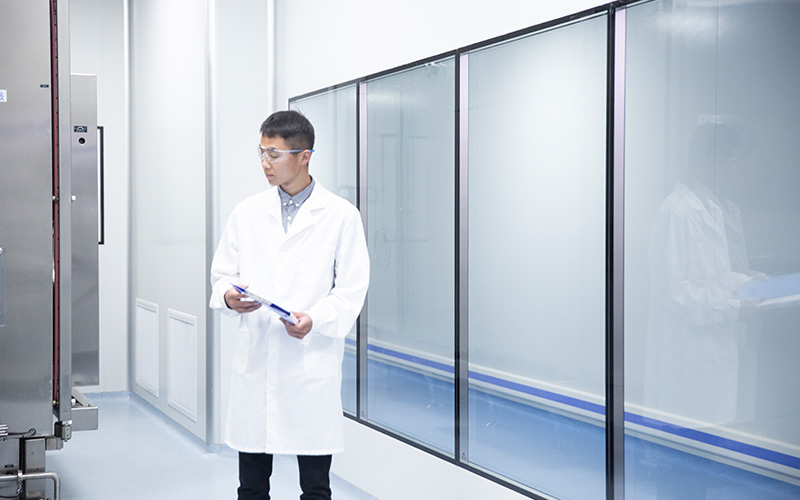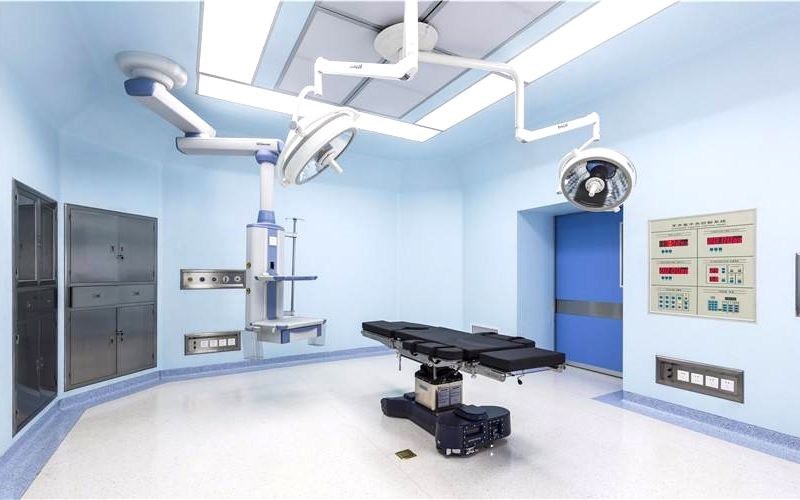We have a passion for unconventional solutions that bring your vision to life.
The hospital’s clean room is a biological clean room. The hospital’s biological clean room is airtight. After reasonable zoning, process design, air purification and other construction links, it can effectively reduce cross-infection and control the spread of bacteria and viruses in the air. During the construction, Wiskind Cleanroom discovered that the biological clean rooms of many hospitals have hidden dangers of congenital deficiencies, and there are many social problems such as concept, plan, design, equipment configuration, construction technology and so on.

1. Can the positive pressure clean operating room operate on patients infected by this epidemic?
The main route of transmission of this epidemic is droplets attacking the respiratory system and mucous membranes through the air. At the same time, droplets are also contaminated on the surface of objects and are transmitted through human contact . The transmission routes are multi-directional. It is recommended that such infected patients should be operated in a negative pressure operating room. However, if there is no negative pressure operating room in the operating department of some hospitals, and the patient must perform the operation, the operation should be arranged in an operating room with a separate area as much as possible.

2. If an operation is performed on a severely infectious patient in a positive pressure clean operating room, how to disinfect the purification unit system?
After the positive pressure clean operating room is operated on patients with severe infectious diseases, the disinfection requirements are the same as those of the negative pressure operating room. In addition to the operating room to cleanroom wall panels , roof, floor, cleanroom door, outlet and all indoor facilities and equipment to conduct a comprehensive, thorough, serious, no dead outside cleaning disinfection, but also carefully clean up all the gaps, strict disinfection.
In terms of purifying the air system, the professional team of professionals should replace the return air filter, the circulating unit filter, the air supply port (or air supply ceiling) high-efficiency filter, and the exhaust system filter under the premise of self-protection. , The replaced filter should also be disinfected, sealed and then disinfected.
Carry out careful and thorough disinfection of air ducts participating in circulation and discharge and fresh air supply ducts without check valves. It is best to use atomized hydrogen peroxide for air duct disinfection.
It is also necessary to carry out disinfection and sterilization measures for the participating unit systems, which mainly refer to the circulation unit, the inside and outside of the exhaust fan unit, and the computer room.

3. What is the main difference between a positive pressure clean operating room and a negative pressure operating room?
The positive pressure clean operating room is an operating room with clean levels (level I , II , III , IV ). Its air system is composed of treated clean fresh air + circulating clean air with different air changes + exhaust air , That is, there is fresh air, circulating air, and exhaust air. The starting sequence of the fan should be fresh air, circulation and exhaust air. The volume of fresh air sent to the operating room is greater than the volume of exhaust air. The relative pressure in the operating room is greater than the pressure in the adjacent room. Its protection objects are mainly surgical patients. Because the exhaust vent of the clean operating room is mostly designed on the top of the operating room, the exhaust fan is a single fan system, and the exhaust air does not need to be equipped with a high-efficiency filter, but only a junior high-efficiency filter.
The negative pressure operating room is generally an operating room with no cleanliness level. Its air system is composed of treated clean fresh air + exhaust air, that is, direct delivery and direct exhaust. The starting sequence of the fan should be exhaust air, fresh air, and the fresh air volume sent to the room is less than the exhaust air volume. The relative pressure in the operating room is less than the relative pressure in the adjacent room. Its protection objects are mainly medical staff and the surrounding environment. The air outlet of the negative pressure operating room should be located at the lower end of the side wall of the operating room close to the patient's head and on the side of the top anesthesia work area. The exhaust fan system is a double fan. The exhaust air must be equipped with a high-efficiency filter.

4. How can we know that the clean room and related controlled environment of our hospital are safe during use?
The main purpose is to be "controllable" and "knowable" for the key parameters designed in accordance with the relevant national standards for the clean room and related controlled environment of our hospital. That is to say, the use process of the clean room and related controlled environment in our hospital is a dynamic process (infection also occurs in the dynamic process), and various parameters of the environment are realized in the dynamic process. Real-time monitoring and management of parameters can realize whether the environment is safe or not. However, the clean rooms and related controlled environments of most hospitals in our country do not have real-time management configurations, so it is basically impossible to know whether our own clean rooms and related controlled environments are safe. This is a shortcoming in the construction and use of clean rooms and related controlled environments in our national hospitals.
Some hospitals now install pressure display devices in clean rooms, so that you can know whether the air in the clean room is leaking and the general situation of organized air flow. However, the pressure of many hospitals shows that the values displayed by the facilities are ridiculously deviated, which can mislead us.
At present, the method of bacterial sampling and culture readings in clean rooms and related controlled environments in hospitals can most directly reflect the safety status of hospital clean rooms and related controlled environments. Although there are many indicators for the safety factor of hospital clean rooms and related controlled environments, they are comprehensive, but the bacteria indicators are the most critical and important. However, it takes a long time for bacterial samples to be cultured and the feedback of safety information is delayed. If it is in an extraordinary period of the fight against the epidemic, it is recommended to increase the time density of bacterial sampling and analysis in key areas.
5. If the hospital is to rebuild some negative pressure isolation wards in the existing buildings, what aspects should be paid attention to?
MasterCard believes that the most critical issue in the construction of negative pressure isolation wards in hospitals is the concept. Although the negative pressure isolation ward of the hospital and the clean operating room, ICU , supply room, liquid distribution center, laboratory, etc. are all controlled environments, the negative pressure isolation ward is not a clean room and does not require expensive air purification systems.
Negative pressure isolation wards are mainly used to treat patients with respiratory infections. The principles that must be followed when designing are to control the air transmission of the virus, cut off the air transmission chain of the virus, and simultaneously implement physical separation and air isolation of the source of infection. When designing, we must insist on: zone prevention and control, layer by layer check; process safety, reasonable and convenient; isolate the source of disease and cut off transmission.
It is best to use a dual-channel mode for partitioning, which can be divided into clean area, semi-contaminated area (also regarded as a buffer zone), ward area (contaminated area), and other auxiliary areas. Each area can be an independent area, and each area is divided or connected in the form of a buffer.
The flow of people and things must be "buffered." Each area requires functional satisfaction and complete equipment. All items that need to be removed from the contaminated area and semi-contaminated area, especially patient excrement and medical waste, shall have special areas for disinfection, sorting and packaging, and re-sterilization.
The air isolation system uses an organized gas flow pattern. The air supply in polluted and semi-polluted areas adopts full delivery and full exhaust. The fresh air should be treated, with initial, medium and sub-high efficiency filter sections. The exhaust fan unit should be equipped with dual fans, one fan is used and one is prepared, and the standby fan can be quickly started. The external discharge of the exhaust system must pass through a high-efficiency filter section, and a qualified and effective check valve must be installed. The exhaust vent must have a certain height, and the discharge direction must be reasonable.
Arrangement of air supply and exhaust vents: The air supply vent of the isolation ward should be located at the top of the side where medical staff enter the operation area of the ward, and the exhaust vent should be located on the underside of the wall near the patient's head in the bed. The air outlet for the buffer zone should be located at the lower end of the wall near the isolation ward. The air outlets of the clean area are arranged according to the position of the air-conditioning outlets of the normal normal office area. The temperature of the isolation ward should be set not less than 22 ℃, and can be moderately higher if possible.
Pressure gradient setting: For the design of a completely independent indoor negative pressure isolation ward, it is best to have a positive pressure buffer channel at the beginning of entering the area, and use positive pressure to protect and separate other areas. The clean area is normal pressure Zone, the buffer zone starts as a negative pressure zone. The isolation ward and the sewage treatment and disinfection room are the main negative pressure area, and the pressure gradient is the highest negative pressure in the entire area.
The number of air changes is set to 12 , which does not mean that fresh air must be sent in 12 times and the air volume must be discharged 12 times. The American standard is also 12 times of air change, but they only send in fresh air for 2-4 times and discharge 12 times of air. The large amount of 8-10 times air volume is the air volume leaked from other areas. The door of the negative pressure isolation ward does not need an airtight door, and it is normal for other areas to vent into the air.
In addition, the operating parameters of the negative pressure isolation ward should be set to remote real-time monitoring mode. The isolation ward should be equipped with high-definition video screen equipment to remotely observe the patient's condition in real time. The sewage discharge from the negative pressure isolation ward is not allowed to be directly discharged to the corresponding sewage discharge system of the hospital. The sewage must be equipped with disinfection equipment and can be discharged after disinfection.
The use of negative pressure isolation wards to treat severely infected patients is an effective means to control the source of infection and cut off the air transmission chain. The hardware construction is one aspect, and the other aspect: use and management are equally important.

Wiskind Cleanroom specializes in cleanroom enclosure system , ceiling system, cleanroom doors and windows and related product development, manufacturing, sales, consulting and services.